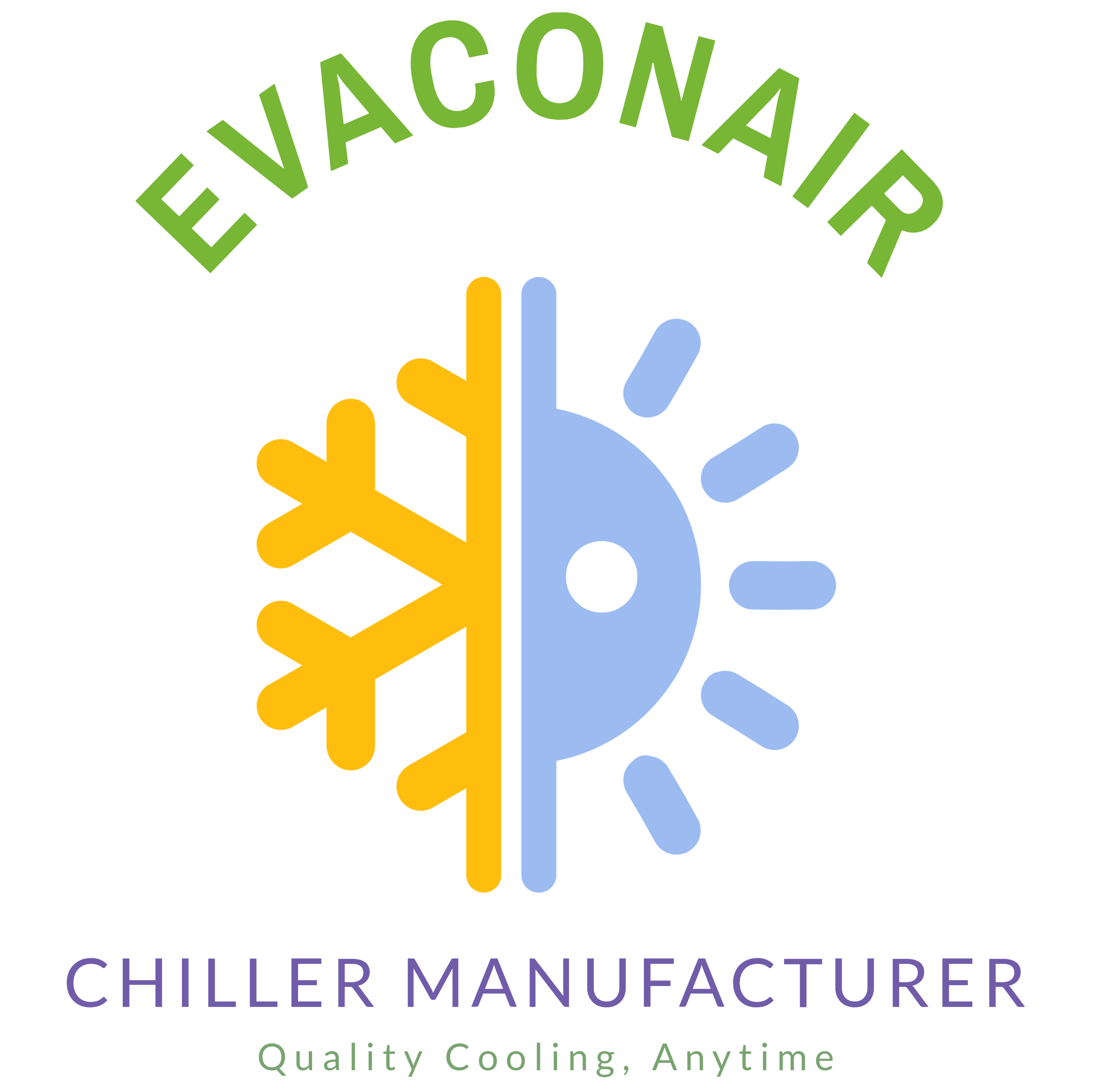Blog
What Are the Main Parts of a Chiller?
A chiller is a complex machine composed of several key components that work together to remove heat from a liquid, usually water, and dissipate it into the environment. These parts are essential for the chiller’s operation, ensuring efficient cooling for various industrial and commercial applications.
Main Parts of a Chiller
1. Compressor
- The compressor is the heart of the chiller, responsible for compressing the refrigerant gas and increasing its pressure. This high-pressure gas is then sent to the condenser. The compressor’s efficiency directly affects the overall performance of the chiller, whether it’s an Air-Cooled Screw Chiller or a Water Cooled Screw Chiller.
2. Condenser
- The condenser cools down the high-pressure refrigerant gas, turning it back into a liquid by releasing heat to the surrounding environment. In Air-Cooled Water Chillers, the condenser uses air to remove the heat, while in Water-Cooled Water Chillers, water is used for this purpose.
3. Evaporator
- The evaporator is where the actual cooling takes place. The chilled water or process fluid absorbs heat from the environment or equipment, and the refrigerant inside the evaporator absorbs this heat, causing it to evaporate and turn back into a gas. This cooled fluid is then circulated to provide cooling.
4. Expansion Valve
- The expansion valve regulates the flow of refrigerant into the evaporator. It reduces the pressure and temperature of the refrigerant before it enters the evaporator, enabling it to absorb more heat efficiently. This component is crucial in controlling the chiller’s cooling capacity and efficiency.
5. Control Panel
- The control panel is the brain of the chiller, managing all operations. It allows operators to monitor and adjust the chiller’s performance, including temperature settings, pressure levels, and flow rates. It also displays system warnings and faults, ensuring that issues can be addressed promptly.
6. Refrigerant
- The refrigerant is the working fluid that cycles through the chiller, absorbing and releasing heat. Different types of refrigerants are used depending on the chiller design and environmental considerations. Choosing the right refrigerant is crucial for efficiency and compliance with environmental regulations.
7. Cooling Tower (For Water-Cooled Systems)
- In water-cooled systems like the Water Cooled Screw Chiller, the cooling tower is used to remove the heat absorbed by the water. The warm water from the condenser is pumped to the cooling tower, where it is cooled down before returning to the condenser.
Auxiliary Equipment
- Mold Temperature Controller: Regulates the temperature of molds in manufacturing processes, working in conjunction with the chiller to ensure precise temperature control.
- Hot Air Dryer: Removes moisture from materials before processing, often used in conjunction with chillers in plastic manufacturing.
- Vacuum Hopper Loader: Transfers materials in manufacturing processes, where maintaining the correct temperature is crucial.
- Dehumidifier: Used to control humidity levels, often working alongside chillers to maintain optimal environmental conditions.
Conclusion
Understanding the main parts of a chiller is essential for ensuring its efficient operation and maintenance. Components like the compressor, condenser, evaporator, and expansion valve play vital roles in the cooling process, while auxiliary equipment such as the Mold Temperature Controller and Hot Air Dryer enhance the overall system’s functionality. For more detailed information on chillers and their components, explore our offerings from top Chiller Manufacturers In Ahmedabad and Chiller Dealers In Ahmedabad.
